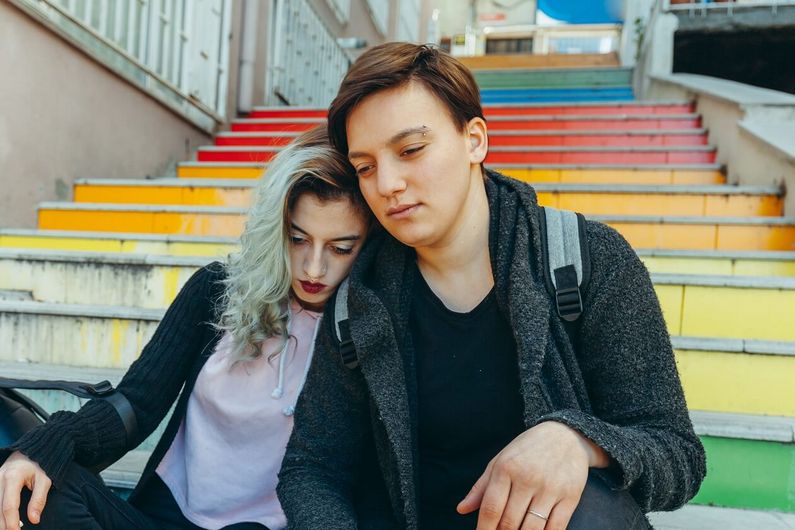Pride talk: Equipping peer helpers for suicide prevention
- UdeMNouvelles
08/11/2022
- Catherine Couturier
UdeM’s Olivier Ferlatte receives $1M from CIHR to create a suicide prevention training program for 2SLGBTQIA+ people.
Olivier Ferlatte, assistant professor in the Department of Social and Preventive Medicine at UdeM’s School of Public Health, researches substance use and mental health issues such as suicide in the 2SLGBTQIA+ community. A host of studies in the past 50 years have shown that the suicide rate among 2SLGBTQIA+ people is two to five times higher than among cisgender heterosexual people, and even higher among trans people. A variety of social factors are responsible for these high rates, including prevailing societal attitudes. “There is still a great deal of discrimination against 2SLGBTQIA+ people,” Ferlatte noted.
Taking action
Having described the situation, Ferlatte wondered what could be done about it. He had observed that despite the high incidence of suicide among 2SLGBTQIA+ people, there is a lack of interventions tailored to their needs. So he submitted a project to the Canadian Institutes of Health Research (CIHR) to fill the gap.
Ferlatte’s project is a logical extension of his research on suicide, which shows that 2SLGBTQIA+ people tend to seek help from peers. “We’ve noticed that because 2SLGBTQIA+ people sometimes have strained relationships with family members and the health system, they are more likely to turn to peers for support,” he said. And they are quite likely to know people who are liable to attempt suicide: a Canada-wide survey Ferlatte conducted in 2018 showed that 73% of 2SLGBTQIA+ people knew at least one 2SLGBTQIA+ person who had tried to take their life and 90% knew a person who suffered from depression, a significant risk factor for suicide.
Ferlatte therefore decided to design a sentinel-type suicide prevention program geared to the needs of 2SLGBTQIA+ people in order to equip peers to recognize the signs that a person is at risk and refer them to the appropriate resources. He pointed out that while there are already a number of such training programs, they are often rigid, neglect the realities of 2SLGBTQIA+ people and use heteronormative materials. The training is generally in-person. Ferlatte’s program will be available online, an attractive option for 2SLGBTQIA+ people, who may wish to remain anonymous. Participants will be able to take the program in the comfort of their home, at their own pace, anywhere in Canada (or the world, for that matter).
Collaborative project
The 5-year project has just been awarded a $1M grant from CIHR. “The idea is to use a participatory design approach; in other words, we will build the program in consultation with potential users,” said Ferlatte, who has experience with participatory and collaborative research. His team will include researchers from Quebec, Ontario, British Columbia and Australia, and partner with key organizations working in suicide prevention, including Suicide Action Montréal, the Association québécoise de prévention du suicide, Egale and the Community-Based Research Centre.
In phase 1 of the project, Ferlatte and his team will review the literature to determine what components should be included in their online training and conduct qualitative interviews to better understand the needs of peer helpers. In phase 2, the program’s content will be created in collaboration with potential users. In phase 3, the training program will go live and its effectiveness will be evaluated. Ferlatte plans to recruit 360 people to take the training and then evaluate the effect on their suicide prevention knowledge and skills 6 months and 1 year later. “We hope this training program will have a positive impact by teaching people how to intervene in their community and improving suicide prevention,” he said.
Of course, peer training alone cannot solve the problem of suicides in the 2SLGBTQIA+ community. “We want it to complement other measures that should be put in place,” said Ferlatte. There are already peer helpers out there, but sometimes they don’t know exactly what to do. “We want to help the community, but without placing all the burden for prevention on its shoulders.”











